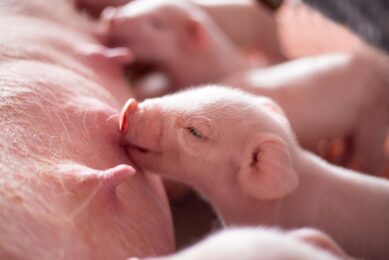Causes of liveweight and probe variations at slaughter – a checklist
Last time I described the ‘profit box’ concept and how useful it was in identifying some of the main causes of liveweight and probe variations at slaughterweight. So what are these causes?
Checklist – 12 factors affecting weight and/ or probe variations at slaughter (not in order of importance as incidence varies from farm to farm).
1. Birthweights
1 g heavier at birth = 2.34 g heavier at 21-day weaning = 20 to 30 g heavier at slaughter? So… does this mean 100 g heavier at birth translates into 2 kg heavier by 106 kg. In my experience these figures at slaughter can be minimal.
2. Birth to slaughter
About 50% of runt pigs can reach 7 kg at weaning if fed and managed selectively.
3. Weaning
Aim for 4 kg difference in pen weight, lightest to heaviest, in 21-28 days. Have matched pens averaging 6 kg, and 5 kg difference in pens of 7 or more kg. These differences enable the pecking order to be established more rapidly so that the submissives get away sooner into full growth potential.
4. Adequate trough space
This is vital, especially post-weaning.*
5. Feeder gap space
Check every day. In comparison, only about once weekly – weight variation at slaughter widened by 20%.*
6. Overstocking
By 15% also widened variation at slaughter by 20%.*
7. Genetics
Preponderance of dam lines influences variability in both growth and grading. Mixing male lines may increase variation similarly.
8. Environment
Too hot, too cold – incorrect ventilation affects variation.
9. Feed intake
Can vary by 20% within a pen and by a similar amount between pens. It is essential to provide your nutritionist with estimated daily intakes from each farm (or even from each house if a CWF pipeline is installed) each quarter so the nutrient intake from the diet can be revised. This helps take care of seasonality (and to a certain extent health changes).
10. Water provision
Accessibility can be as important as adequacy.
11. Seasonal effects
Probe and carcass weights are lower in the summer months.
12. Health
Good health reduces the spread of weights within pens.
Many of these influences are self-evident – even so, despite ample guidelines being available (such as for factors 5, 6, 8, and 10) my farm visits reveal about 33% are not being followed.
* Profit Box figures are available for these three failings, both before and after rectification. Attending to feeder gap space daily improved the number of pigs in the top right-hand quartile by 17%; giving 50% more trough space for ten days post-weaning by 19%; and destocking to the advised maxima, by a massive 28%.











